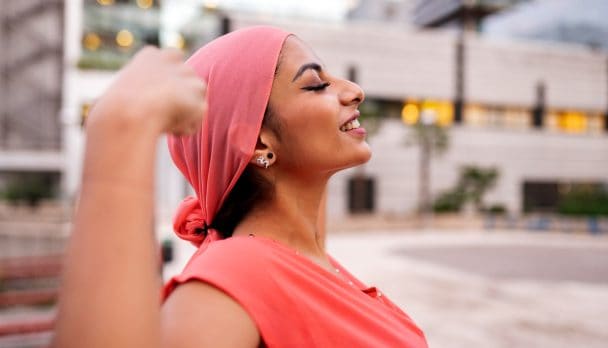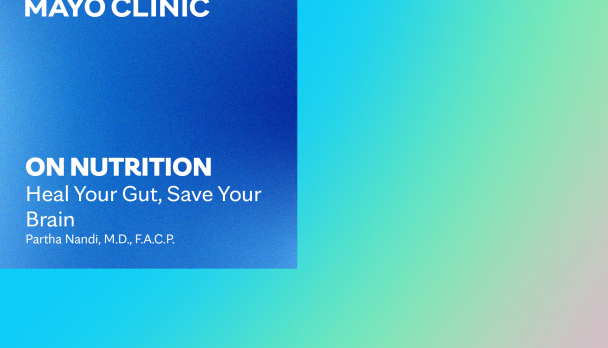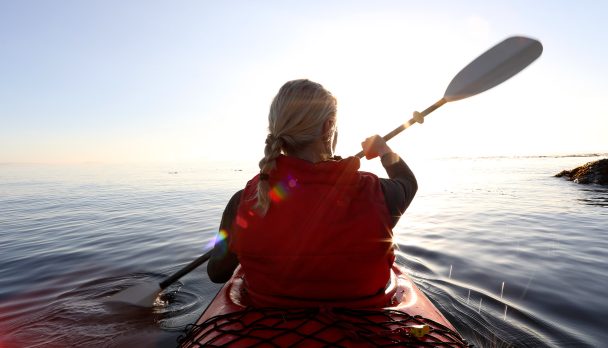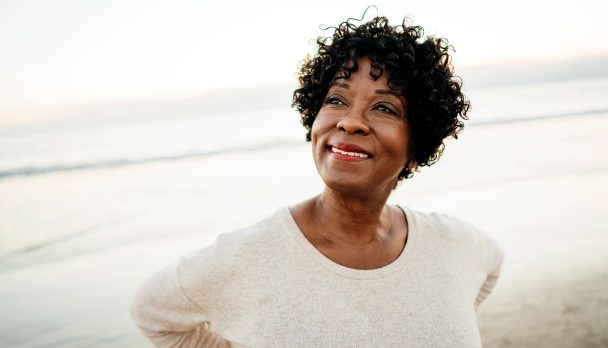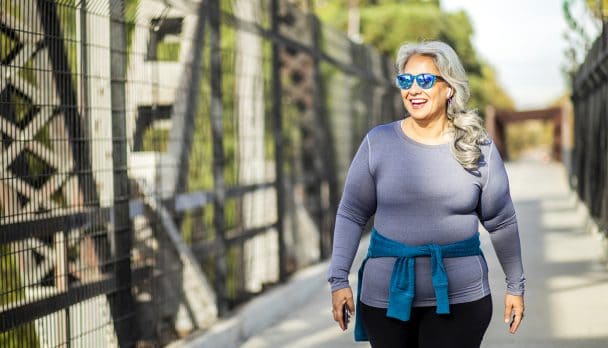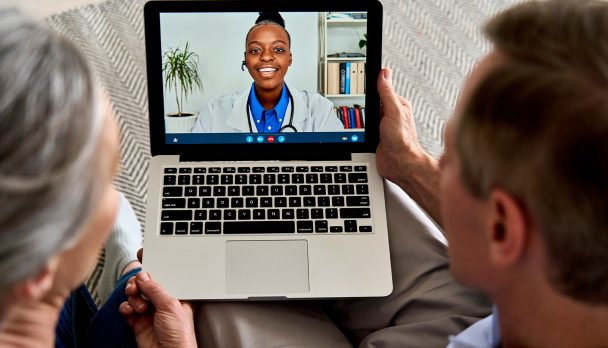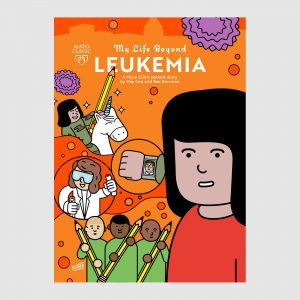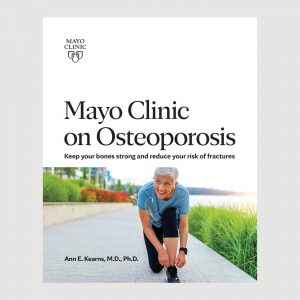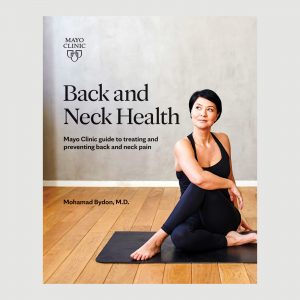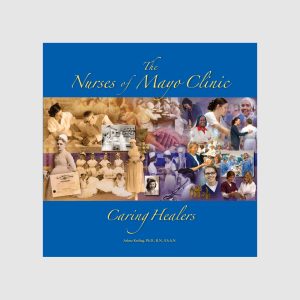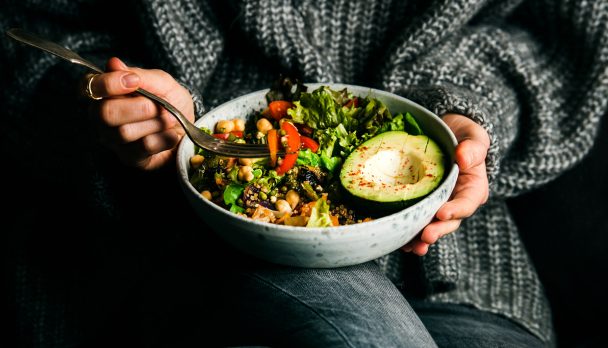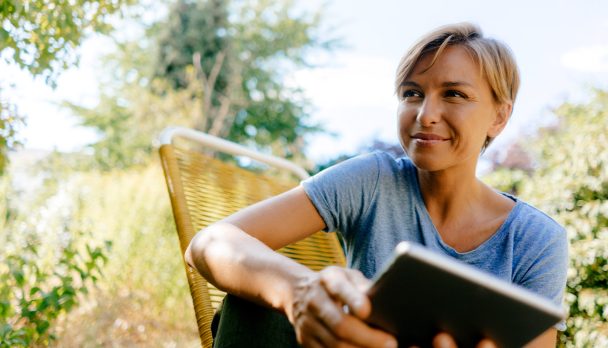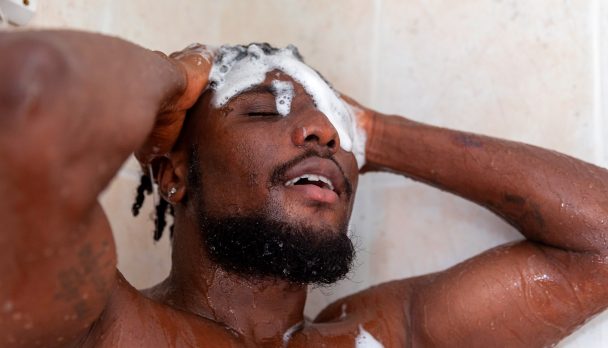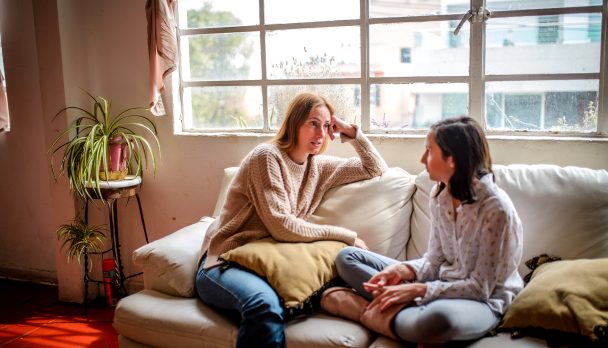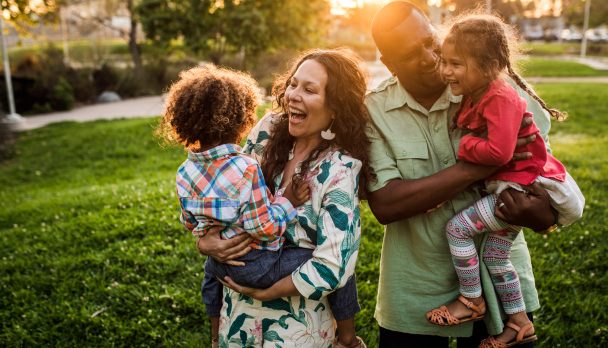Nothing says summer like fun in the sun. But that can also give us cancer! In fact, skin cancer is the most common form of cancer in the U.S. — one in every five Americans will develop it. So how do we enjoy the sun, soak up its benefits, and stay safe?
On this episode of Health Matters, we talk with dermatologist Dr. Naiara Sbroggio Barbosa about Vitamin D, choosing the right sunscreen, and how and when to soak up those summer rays.
Find us online at Mayo Clinic Press for more health and wellness articles, podcasts and books. Do you have feedback, questions or topic suggestions? Email us at mcppodcasts@mayo.edu.
Read the transcript:
Kristen Meinzer: This is “Health Matters,” a podcast from Mayo Clinic where we discuss the latest medical advice, news, and research to help you live a happier and healthier life. My name is Kristen Meinzer. I’m a writer and journalist, and in this episode, we’re talking about summer skincare.
Nothing says summer like fun in the sun. It feels good to go outside, bask on the beach, and feel the warmth all over your skin. There’s a reason we call Vitamin D “the sunshine vitamin.” But the sun can also give us cancer! In fact skin cancer is the most common form of cancer in the U.S. One in five Americans will develop some form of it.
How do we enjoy the sun, soak up its benefits, and stay safe? How much sun should we be getting? With all the options on the market, what’s the right sunscreen to buy? In this episode, we’re talking to Dr. Naiara Sbroggio Barbosa about the sun and skincare.
Dr. Barbosa is a dermatologist at Mayo Clinic in Jacksonville, Florida, with expertise in diagnosing and treating skin cancers. Dr. Naiara Sbroggio Barbosa, welcome to the show.
Dr. Naiara Sbroggio Barbosa: Thank you for having me, Kristen.
Kristen Meinzer: All right, Dr. Barbosa, we are here to talk about the sun, the skin, summer protection, all of this stuff. First and foremost, let’s start off on a happy note. The sun, it’s an important part of life on earth. It is not necessarily the enemy. Why do we need sunlight? Do we need sunlight?
Dr. Naiara Sbroggio Barbosa: I’m in Florida. As you can imagine, a lot of us who live here in Florida really like the sunshine and the warm weather. I think there’s a lot of benefits to seeing that brightness of the sun and feeling the sun on your skin.
One of the benefits that we always think about is vitamin D. When you think about the sun, you’re like, “I need to go get my vitamin D.” Vitamin D is great. We know that it has a lot of health benefits. Bone health depends on vitamin D.
Some of the research is showing that potentially can help with other diseases like some neurological diseases or autoimmune diseases. There’s definitely benefits to feeling enthusiastic when you wake up and seeing the brightness of the sun, but obviously you have to be very careful because too much sun also has a lot of harms, one of them being potentially skin cancer.
How does the sun help us make Vitamin D? To make science very simple we have this component of our skin that is pre-vitamin D. When the ultraviolet light from the sun hits the skin, it starts this process where that pre-vitamin gets activated, and then it goes through the cycle to actually become what we know as vitamin D that is absorbed in our body and actually helps our bones.
Now, for you to also have that process happening, you need to make sure you’re having a healthy diet. You need to make sure you have those components so your skin is actually healthy and can make that vitamin D. We see vitamin D in red meat liver, red meat that has high protein and egg yolks. Oily or fatty fish is also a good source. You can always take a supplement. There’s a lot of different supplements of vitamin D, very different variations of doses. For the dose, I would have your primary care advise you.
It’s important to think about it as a whole group of things. It’s not just one thing. You don’t want to just rely on supplements. Or just your diet. I think that the sun is definitely a big component, but again, you don’t have to go outside and bake yourself in the sun.
Kristen Meinzer: Well, what is the right amount of sun then? If we want to get the vitamin D, but we don’t want the cancer, is there a time window that we should all aim for as far as daily sun exposure?
Dr. Naiara Sbroggio Barbosa: It is estimated that about 80 percent of our vitamin D comes from the sun. However, about 10, 15 minutes a day, maybe three or four times a week is enough to get that production of vitamin D.
We know that a little bit of sun exposure every day is probably healthy. There’s no right amount of sun. There’s a lot of variety that we consider. Like the color of your skin. For example, if you have very fair skin, you’re probably going to get a tan or sunburn much more quickly than someone who has darker, brown or black skin.
Have you had skin cancers before? Are you outside at seven in the morning? Or are you outside at 1 p.m. when the sun is stronger? So those are things to consider.
The way to think about it is you always want to try to protect yourself. Nothing that you’re gonna do, using sunscreen, seeking shade, trying to be outside during the non peak hours of the sun, so early in the morning, later in the day, they’re not a hundred percent.
We’re still getting a little bit of sun when you drive to the grocery store. You walk to get your mail. You’re by a window. Sometimes unintentionally you’re getting some exposure as well. You do your best to be as protected as you can. So if i’m going to be outside walking my dog, even if it’s eight in the morning or nine in the morning I will put sunscreen on. Or wear long sleeve shirts, wear a hat. Or maybe sit under a tree if you can.
But what amount is the correct amount, no one can tell for sure. Not like a magical number. Hey, you can be outside for 10 minutes and it’s okay.
Kristen Meinzer: You mentioned sitting next to a window. Am I getting sun damage when I’m sitting next to a closed window on a sunny day? Is the glass protecting me in any way?
Dr. Naiara Sbroggio Barbosa: When you think about sunlight we think about ultraviolet rays. There’s two types, A and B. Those are the most harmful ones that we think about. Actually a lot of glasses will protect you against one of those UVB, but you’re still getting sun damage.
Now, if you’re standing by a window and there’s no sun coming through and you’re not actually being hit by the sun, that’s completely fine. But for example, how many times you’re driving and you have the sun through the window on your arm, or on your hands, or on the side of your face?
We actually see the left side of the face tends to have more damage and probably from people just driving. You need to be mindful that that window is not covering you from sun damage.
Now there are some tints you can use that are within the law. Now there’s better tinting of the windows where it’s not completely dark, but they are filtering more of those ultraviolet lights.
Kristen Meinzer: I want to ask you specifically what is happening to the skin when we are crossing the line from healthy to unhealthy sun exposure. What’s happening to the cells?
Dr. Naiara Sbroggio Barbosa: When that sunlight is hitting your skin, your body is releasing and producing more melanin. Melanin helps give you that pigment. Now some people have more of that production, so they do get tan, but some people don’t, so they get burned, but either way you’re getting that damage. When your body is producing more melanin and giving you that tan, it’s basically your body trying to shield itself from mutations and from that sun damage. It is a sign of too much sun or a sign that you’re already harming your skin. It is not a good thing.
I think that’s a misconception that a lot of people have and hear well, I go in the sun but I don’t burn, I tan. The way that it actually is working is your body, when you’re getting tanned, it means that your body is calling for help.
Kristen Meinzer: My skin, it may look like a, quote unquote, healthy tan I’m developing, but it’s really my skin freaking out and trying to protect itself.
Dr. Naiara Sbroggio Barbosa: Again, some people have a little bit more of that. While others, usually someone with fairer skin, might not have so much of that melanin being produced, so they go straight to a burn. But for us, if I see you very tan or I see you sunburned, both of them mean that you have sun damage.
Kristen Meinzer: I am curious, some things that are caused by sun damage like wrinkles or maybe some freckles or dark spots, are those actually dangerous or are they just cosmetic issues? We see all sorts of products at the drugstore saying this will help you get rid of your wrinkles or freckles. Is that actually dangerous, or is that just aesthetics?
Dr. Naiara Sbroggio Barbosa: Freckles, wrinkles, there are other growths that you can get on some exposed skin that are considered benign. Benign means that they’re non cancerous, but they are basically a reflection of some damage over time. As we get older, we’re going to get wrinkles, our skin is going to get thinner, but when you’re getting a lot of sun damage, you’re accelerating the process.
There are a lot of products around and it’s overwhelming. You walk into Walgreens, Walmart, whatever store and there’s so much there and they all say that they are recommended by dermatologists, or they have proven efficacy. The thing that I always tell my patients is that a lot of the creams have an effect, they have to penetrate deep enough on your skin to actually create collagen, create that structure, and help with the wrinkles. Most creams, at this point in time, do not do that. They cannot go that deep on the skin.
The best thing you can do is protect yourself from the sun, and that starts at any age. Obviously, the sooner the better, but cumulative sun damage increases your chance of premature aging and skin cancers. That’s really the best you can do.
As good as the sun feels, it’s also good for us. The sun activates the pre-vitamin D in our body and allows us to convert it into Vitamin D. That Vitamin D can then benefit our bones and other parts of our body. To get enough sun to produce Vitamin D, we need about 10-15 minutes of sun 3-4 days a week.
But as for the eternal question – how much sun is the right amount – there’s no easy answer. That can depend on your skin tone, skin cancer risk, what time of day it is, and how direct the light is.
That being said, whether you burn or tan, if your skin is producing pigment, that means you’re getting sun damage. Sometimes we can even get damage without burning or tanning, like through a window. When you’re in the sun, you should be mindful of wearing sunscreen, covering up with clothing, or timing your activities earlier or later in the day. Now let’s talk about how to spot sun damage on your skin.
Kristen Meinzer: What is the difference between a freckle, versus a mole, versus a growth, versus a tumor, versus cancer? Sometimes it seems that these terms are used interchangeably, but they’re obviously not all exactly the same.
Dr. Naiara Sbroggio Barbosa: Freckles are one of the first signs of sun damage because you see little kids and they have freckles and some people find them very cute. They are kind of cute, but freckles are a sign of sun damage. We see it a lot on the face, shoulders and chest area, where we’re chronically getting sun damage.
They’re tan in color. They’re usually multiple lesions. It’s not just one freckle, there should be a group of freckles. They are benign. They are not cancerous, but they are a sign of too much sun.
Now, a mole is different. They are basically a group of melanocytes. Melanocytes are the cell that produces pigment in our skin. When they grow too much, or you get a group of melanocytes, they can be benign or malignant. A mole is a benign, noncancerous growth of melanocytes. Usually they are individual lesions. Obviously a person can have a lot of moles but they are each their own lesion. They can be skin color, they can be light brown, dark brown, they can be raised, they can be flat.
Now, moles can become melanoma. Melanoma is a skin cancer. Most of the time a melanoma will be a new lesion that shows up. But if you get a lot of sun damage and you have the right genetics, a pre-existing mole could mutate and become that bad growth of melanocytes.
Moles can also show up in areas where you have sun exposure. We tend to say that when you get to your 30s, you shouldn’t be making new moles. You might make new freckles, but moles by that point, they should be done creating themselves.
Now there are other benign noncancerous growths like a cyst, or a lipoma. Some people get these red marks that are called cherry angiomas, completely benign. None of them are cancerous, but they are kind of annoying.
Compared to skin cancers, we need to be able to detect those and we want to take care of them because they are very treatable if you find them in an appropriate amount of time.
Kristen Meinzer: What are the different types of skin cancer? How do they present themselves? How do I know that this is something that I should get checked out?
Dr. Naiara Sbroggio Barbosa: I always think about something that is misbehaving. Any lesion that is new, is growing, is bleeding, is itching. Maybe you’re like, “I think this is a bug bite, but now it has been there for a month or two.” That’s not normal for a bug bite or a pimple. You expect that those things resolve. If they’re not behaving as you expect, or they stand out in any way, you probably want to have them checked out. Skin cancer is one of the most common cancers in the world. We know in the U.S. alone, about 1 in 5 people will develop skin cancer in their lifetime.
There are three main types of skin cancers that we think about. Basal cell, squamous cell, and melanoma. Basal cell cancer is the most common, which is a good thing because they are a less aggressive form of cancer. They usually look like a little bump that we call pearly. They are a little bit shinier. They grow very slowly, but they will keep growing with time. A lot of times they will be bleeding too. They are in areas where you get sun; the face, unfortunately, is the most common place to get that, and your nose, where we get a lot of sun, tends to be the most common place on the face.
Squamous cell can appear similar to a basal cell, like something that is bleeding, looks like a wound, maybe you feel like, “Oh, I think I scraped this area, maybe it’s just an ingrown hair or something,” but they keep growing. They will bleed. They can be a little bit more aggressive. They’re extremely common. A small percentage can actually grow fast and could go to other parts of your body. We don’t want to miss them.
Dr. Naiara Sbroggio Barbosa: Then melanoma is the one that, when you think about skin cancer, people always think about melanoma. It’s not uncommon, but it’s less common than basal cell and squamous cell and usually it will be a dark spot. Now, not to make anyone scared, but you can get melanomas that don’t have pigment, so then they just look like a pink or white area. They’re more rare.
But with most melanomas we think about a dark spot. We think about the ABCDEs of melanoma. A is asymmetry if you have a mole that is very asymmetrical. B is borders. Maybe I cannot tell exactly where the mole is starting or ending. C is the color. They tend to have either a very dark color or multiple colors. A lesion that is brown and red and white, that’s usually not normal. D is the diameter.
Any mole that is greater than a pencil eraser. Again, you can have moles that are big and completely benign, but those are just guides that help us. Then E, which I think is the most important, is evolving. If you feel like, “Oh, I have this new mole that shows up on my arm, but now it’s kind of growing, it looks kind of funky, it’s asymmetrical,” it is maybe itching or bleeding, and it’s really changing rapidly, you want to have that checked.
Kristen Meinzer: Are there certain people who are more at risk? What sorts of things determine my personal risk for skin cancer?
Dr. Naiara Sbroggio Barbosa: There are a lot of factors. In general, we think about age. The older you are, the more sun exposure and damage you accumulate over time. It’s more common that we see skin cancers in older adults versus young kids. But having had patients in their 20s and 30s it’s not uncommon.
Fair skin. The lighter your skin, the higher chance of getting skin cancer; Genetics: Family history of skin cancer, maybe personal history of skin cancer. There are some genetic syndromes or other conditions that can increase your risk of skin cancer–and there’s sun exposure. If you are getting a lot of sun–you grew up at the beach, you were a lifeguard your whole life, or you work outside a lot, you probably got a little bit more sun exposure. Tanning bed use as well includes your risk.
But you can always have a baseline skin check and your dermatologist can tell you, ‘Your skin looks great. I don’t see anything that is very concerning.’ Maybe I can see you every few years; versus, ‘You have too many moles. You have a strong family history of melanoma. Maybe we need to see you more closely.’
Kristen Meinzer: And when should I start going to a dermatologist to get my moles checked out and get that routine skin check you’re speaking of?
Dr. Naiara Sbroggio Barbosa: The guidelines are a little bit flexible. There’s no specific time that we say, ‘Hey, at 25, go to the dermatologist, have a skin check.’ If you have a history of skin cancer or a primary relative, like say if your parents have skin cancer, your siblings have skin cancer, or your kids have skin cancer–melanoma has a bigger genetic component–so it just means that you could potentially have the same genetics that increase your chance. you probably want to start those skin checks very early in life.
Now, if you don’t have a strong family history of melanoma, and you never had skin cancer, it’s hard to say for sure. Some patients will just go to their primary care doctor, and they will do a triage. They will look at your skin, kind of measure your sun damage, see how many lesions you have, and they might be able to reassure you right there. Sometimes if they see a lot of things, they might say, ‘Well, Kristen, I think you should see a dermatologist because you do have many spots. It’s kind of overwhelming how hard it is to tell what is benign versus malignant.
As you get older, just like with screening, when you’re getting your colonoscopy, you’re getting your mammogram, you’re getting your prostate checked–I would consider, if you have never seen a dermatologist, to have a screening exam just for baseline. And I think that will help you know if you need to have further skin checks and how often.
Kristen Meinzer: What about on my own time when I’m at home? Should I be doing certain things to screen and monitor myself when I’m not at the doctor’s office?
Dr. Naiara Sbroggio Barbosa: Yes, yes, we should know our skin very well. And I know sometimes it’s hard to see your back or the top of your head, but I would do your best to be familiar with the spots you have, because a lot of times those skin cancers will be new lesions that you’re getting and they are standing out.
We call them ugly dots. If you have a bunch of moles and now there’s this one that just doesn’t seem to fit–it’s a little bit darker, it’s bigger. If you’re not paying attention, you’re never going to see that, and then you may be delaying your diagnosis. Make sure you are doing a self skin exam, every month or every other month, getting a second mirror, trying to look at your back, or utilize a partner if you have someone who can help you. I definitely recommend that you know your skin very well.
One of the things that sometimes people forget is that you can get skin cancer in areas that don’t always see the sun.The genital area, between your toes, between your fingers, under your nails [are all examples]. Some people always have nail polish on, so you don’t really see your nails. When you’re getting them changed or reapplying [polish], check your nails for any dark spots. Look at your feet and the bottom of your feet. You don’t want to have a growth growing there for years that you don’t detect.
When you see your primary care doctor or see someone for a pap smear, make sure that they comment if there are any moles or lesions there that maybe you’re not always looking for.
Kristen Meinzer: Wow. I’d never thought to look in those areas before.
Dr. Naiara Sbroggio Barbosa: I know. Skin cancer can be tricky and it’s most commonly sun-exposed areas, but for example, there’s HPV virus. It’s very common, most of us have been exposed to it. You can get a wart, which is completely benign. But HPV can also cause cancer. The first thing you think about is cervical cancer, but you can get squamous cell carcinoma in the general area because of HPV. That’s something to think about, especially if you have had HPV infection.
Kristen Meinzer: Does skin cancer present itself differently in people with darker skin versus lighter skin?
Dr. Naiara Sbroggio Barbosa: The way I think about it is that, for any person, skin cancers will be lesions that don’t belong and they’re symptomatic. Any growths that are new, they’re growing too rapidly, they are painful, they’re itching, they’re bleeding, that will be the same across any race, ethnicity. Now, we know that darker skin patients or individuals have a higher rate of skin cancers in areas that are not sun exposed. We think about the inside of the mouth, we think about genital area, and hands and feet. Anyone can get a skin cancer in those areas, but it just tends to be a little bit more common for that population.
Kristen Meinzer: What about men versus women? Are there any ways that skin cancer presents differently in men versus women?
Dr. Naiara Sbroggio Barbosa: Not necessarily. Genders are affected very similarly. I do think that older men have a higher chance of having skin cancer, but I think a lot of it is maybe based on factors of lifestyle choices. I don’t want to make assumptions, but I think for women, it is easier sometimes when we’re used to putting creams and things on our skin. I know a lot of men, at least my patients, a lot of times when I tell them to put sunscreen on, they’re like, ‘I don’t want to put anything on my skin.’ And that has been changing over the years, now that we have so many different types of sunscreen.
Kristen Meinzer: There are a lot of mixed messages about what kind of sunscreen is best to wear. Is there a difference between a mineral sunscreen versus a chemical one? Can we talk about those different types of sunscreen and what’s best for us?
Dr. Naiara Sbroggio Barbosa: I always tell patients the best sunscreen is the one you’re going to use. And that might be different for me or for you, Kristen, depending on your skin type or what fragrance you like, what type of texture you like. So find a sunscreen that you feel comfortable using every day. There are a few things that we think about. Sunscreen can divide into two different groups. One is the chemical sunscreens and one is the mineral or barrier sunscreens.
The barrier mineral sunscreens are usually zinc-based. They are thicker, they’re a little bit whiter because they’re not getting absorbed on your skin, but they’re creating this barrier that blocks the ultraviolet light from the sun. Now, I like those for patients who have very sensitive skin. A lot of people have tried different sunscreens and it burns or they feel like it gets in their eye or they have maybe eczema or something. Zinc-based sunscreens are very easy to tolerate but they can also be a little bit harder to spread and they can make you have that white look just because they’re staying on top of the skin.
Kristen Meinzer: That can be especially hard for people of color, I will say, as somebody who has brown skin. Sometimes I’ve tried mineral sunscreens that really just, they look like streaks of almost like white paint [on my skin].
Dr. Naiara Sbroggio Barbosa: Right. Yeah. Exactly, they’re not the most good looking sunscreens, but they’re trying to get better formulations where they can be a little bit easier to apply. But maybe then the chemical sunscreen is best for you. [In] chemical sunscreens, chemicals are absorbed into your skin. And then instead of that light coming in and going to your cells and potentially causing some damage, chemical sunscreen is helping convert the lighting to heat and basically just disseminates. It sends it out of your body in a way that is not actually damaging the cells.
Kristen Meinzer: Oh, it’s almost diffusing the UV rays then.
Dr. Naiara Sbroggio Barbosa: Yes, so then your body is not suffering the consequences of some damage. They’re easier to apply. They’re very, very common. Usually the component is benzone. So oxybenzone, avobenzone. I know some people get worried about using something that is chemical, but they are still evaluated by the FDA. Even though some studies have shown that maybe you absorb a little bit of those chemicals, we don’t know that there’s any harm to it.
Dr. Naiara Sbroggio Barbosa: You can do a chemical sunscreen or mineral sunscreen SPF of 30. The number on the front of the sunscreen should be 30 or higher. If you have very fair skin and you’re outside a lot, I would do a higher number. Personally, I use a hundred because that’s the highest I can get. But on a daily basis, if I’m just going to work I have a lotion that has SPF 30 and that’s what I use because I’m getting my car in 15 minutes. I’m at work. That’s the sun exposure I’m having.
You want something that is broad spectrum. Most sunscreens will be broad spectrum, but that just means it gives you protection to UVA and UVB, and you have to reapply every two hours. But again, as you can imagine, it’s not perfect. When we put on sunscreen, a lot of us are not putting on the right amount of sunscreen. We might not be even. You’re trying to get on your back or on your shoulder. There’s a few areas that you miss and later on you regret it.
Kristen Meinzer: As you said, reapplying, I would say that I am like many people who would just forget to reapply. I’d feel so proud of myself in the morning putting it on, but then I wouldn’t put it on again for the rest of the day.
Dr. Naiara Sbroggio Barbosa: Well, yeah, and sometimes you get distracted. You’re like, oh, I’ll be outside for a little bit of time, and that little bit of time becomes hours and that’s not the first thing on your mind. I have sunscreen everywhere, but I always have to be in my car because it has happened that I go somewhere and I think it is going to be 30 minutes and [ends up] an hour to hour, so then I have the sunscreen I can reapply.
Kristen Meinzer: I just realized, I never asked you, what does SPF stand for and how do we interpret the numbers ?
Dr. Naiara Sbroggio Barbosa: SPF means the sun protective factor. Some people think that [if] it’s 30 or 50 or 100, it means that I can stay outside longer. It doesn’t mean that, it just means that it gives you a little bit more resistance to the sun. The 30 will protect your skin to a certain factor, but if you’re outside one hour with an SPF of 30 or an SPF of 50, that duration of that protection is the same.
Kristen Meinzer: What about skin tone? For example I have a lot of melanin, and when I’m exposed to the sun I do try to protect myself, I get darker and darker, whereas I have other friends who have much lighter skin, and they can sometimes peel or blister. What should my friends and I each be doing differently based on our skin tones?
Dr. Naiara Sbroggio Barbosa: Now we know that for people with more fair skin, the sun exposure is a really big factor for skin cancers. Now for people with skin of color–Hispanic populations, Black populations, Native Americans [and more who] have darker skin, there has always been that question [of whether or not darker skin tones can] burn. ‘Why do I need sunscreen?’ Maybe the sun is not the major component to create skin cancer, but we know that they get skin cancer and we know that the sun has a lot of harm.
Our recommendations are usually the same for everyone. You want to use sunscreen when you’re outside, SPF 30 or higher. Care and prevention is always the same, it’s trying to be as safe as you can when you’re outside.
Kristen Meinzer: Got it. I also see sunscreens that say are for kids, or waterproof, or different skin conditions. What makes them different? Should kids only be using certain types of sunscreen?
Dr. Naiara Sbroggio Barbosa: Some sunscreens are advertised that they are for kids versus adults, versus oily skin, you have the sports section, etc. The components of sunscreens tend to be very similar. One that is for older age, versus sport, versus dry skin, they probably all have the same components. Some of them say water resistant or waterproof. What it means is that they might work a little bit better in the water, but nothing is actually waterproof, especially if you’re swimming. You want to apply a few minutes, maybe 10 to 15 minutes before you’re going to water. You get out of the water, you probably want to reapply too.
For kids, a lot of times the zinc sunscreen should be better tolerated, just because kids are touching their face and then they touch their eyes. I love the spray sunscreen for myself, but with kids it can be a little bit harder. You want to be even with it. You don’t want to be inhaling all those particles. They also have those sticks. They look like the deodorants that you get over the counter. Sometimes that’s kind of easy to rub for kids, if they don’t want to feel goopy and have the cream.
Kristen Meinzer: My mother told me when she was growing up, she would slather herself with mineral oil, or with tanning oil, but it just smelled like coconuts. Some of those products nowadays, we laugh at and we’re like, ‘Oh gosh, that’s not sun protection.’ That’s just oil, right? But are there other things in addition to those tanning oils that we should try to avoid that are in the summer sun lotion aisle?
Dr. Naiara Sbroggio Barbosa: I would avoid anything that is for tanning. Anything that is tanning, you’re putting on your skin and then you’re sitting outside to almost emphasize that damage of sun. As we talked about, there’s no healthy tan, so I wouldn’t use any of that.
Kristen Meinzer: Now we all know we shouldn’t bake ourselves in the sun to get tan, but some of us still like the look. Is there a safe way to get a tan? Are tanning beds okay?
Dr. Naiara Sbroggio Barbosa: Tanning beds [are] awful. I would never recommend them. I would say avoid them. We know that tanning beds are carcinogenic. Even one time that you use a tanning bed, you already increase your chance of getting skin cancer. If you want to look tan, you can do a spray tan. That’s probably the only safe tan.
Kristen Meinzer: Is there any risk with all the sunscreen that I might not be getting some of the benefits that I should be from the sun? Like, for example, is it going to interfere with me absorbing vitamin D?
Dr. Naiara Sbroggio Barbosa: It will affect the vitamin D absorption, but again, you don’t need to be in the sun for that long to get vitamin D. Most of us, if you get a vitamin D blood test, are lower because we are inside most of the time. Most of us are in the office. We’re not doing as many things outside, so we’re not getting that natural vitamin D. But again, you can get it through a healthy diet as well as taking supplements.
Kristen Meinzer: Now most of us are pretty good at recognizing we need sun protection from direct sun. But we also talked a little bit about windows earlier, where people might not realize they’re getting damaged. Are there other situations where people tend to overlook how much sun exposure they’re getting?
Dr. Naiara Sbroggio Barbosa: Something to think about that people forget is reflection. It might be that you’re on the boat and you say, ‘Hey, I’m under cover and I’m not getting any sun,’ but it could be that there’s some sunlight reflecting from the water into your face or your skin and you’re still getting sunburn or if you’re skiing, snowboarding, that snow will reflect sunlight.
Or [even on a] cloudy day like today, a very cloudy day here in Florida, I’m sure if I look at the weather app, the UV index is going to be five, six, seven, which means we’re still getting a lot of that ultraviolet light. When it’s cloudy, it doesn’t mean that the sun is not out. There’s still sunlight that will cause damage. It’s just not as obvious as a sunny day. You should always be careful, making sure that you’re protecting yourself. You can always look on your phone, look at the ultraviolet index.
If it’s two or lower, you’re probably safe. You might not even need sunscreen. But if it is higher than two, three, and sometimes it can go to 10, 12– That means that the sun is really strong, so you want to do anything that can be done to protect your skin.
Kristen Meinzer: Is your advice different for people who are on medications like retinoids that make our skin even more sensitive to the sun?
Dr. Naiara Sbroggio Barbosa: Some protection methods will be the same. Most people are using that sometimes for acne or for wrinkles, and trying to stay healthy with your skin. What the retinoids do is they actually cause dryness. Retinoids can make your scent a little bit more sensitive. Then, if your skin is dry and sensitive and you go in the sun, obviously that makes it even worse. Think about sun-sensitive medications. There’s antibiotics. A lot of antibiotics can make you more sensitive to the sun. There’s specific diseases or conditions that can make you more prone to get a sunburn.
Recommendations will be the same. Whether you’re on those medications or not, you should be using sunscreen, seeking shade, and avoiding the peak hours of the sun. If you can’t, don’t do your yard work at noon, right? Go outside at 7 or 8 in the morning.
Kristen Meinzer: Is that something I should keep in mind year round or just in the summer?
Dr. Naiara Sbroggio Barbosa: The warmth of the weather doesn’t mean that the sun is not strong. That’s where I love to see that UV index. It could be 20 degrees outside and it’s freezing and I know it’s so great to sit by the window and get the sun, but it could be that that sun is very strong. Now, the days are longer during the summer, so it can be that in the winter at 10 o’clock, the UV index is true and you can still be outside, compared to the summer, depending on where you are. Arizona, for example, you probably don’t want to be outside before 6 p.m. because it’s still a very strong sun and you want to be careful all year round.
Kristen Meinzer: We often hear this stat over and over again, that 50 to 80 percent of sun damage to our skin occurs before we even reach the age of 18. I think that demoralizes a lot of us and makes us think, ‘Well, what’s the point then? If 80 percent of the damage is already done, why bother?’ What do you say to that?
Dr. Naiara Sbroggio Barbosa: I need to actually look at the science behind it because I don’t know that we actually know that. A lot of the skin cancers are the accumulation of sun over time. I always remind my patients, if last summer you had a terrible sunburn, that’s not what is causing your skin cancer today. But if you think about up to age 18 or 20, you probably haven’t had that much sun. Maybe you’re playing sports, you’re outside running around, but then think about the next 30 years, if you’re always getting sun damage.
Don’t think it’s ever too late. Obviously, the sooner you start, the better. Before 2018, I’ve had many sunburns. Now that doesn’t mean that’s it, there’s no hope for me. All of us get smarter with time, especially as we’re living longer. If you’re gonna live into your mid to late 80s or 90s, if you have seven years of sun protection, that’s great. You can always protect your skin. I really think it’s accumulation over time [that causes skin cancer].
Kristen Meinzer: That’s so reassuring. Never too late.
Dr. Naiara Sbroggio Barbosa: Definitely get some sunscreen. Make sure that you protect yourself from the sun because it can still make a difference.
Kristen Meinzer: Well, Dr. Naiara Sbroggio Barbosa, this has been so illuminating. You’ve given us so much hope that we can still protect ourselves against the sun. Thank you so much for your time today.
Dr. Naiara Sbroggio Barbosa: You’re welcome. We love to talk about this. Sun protection is one of the best things you can do for staying healthy [and] staying beautiful. Preventing those wrinkles. Go enjoy the outside, but just make sure you’re protected. You’re doing the right things. Thank you so much for having me.
Kristen Meinzer: To recap, we can have a variety of growths on our skin due to sun damage–many of which are benign. The key is knowing when something might be cancerous and needs to get checked out by a dermatologist. Skin cancers often appear as lesions that are new, growing, bleeding, itching, or generally behaving in a way that isn’t normal for your skin. For melanoma in particular, you want to check if something A) is asymmetrical, B) has no clear border, C) is a color that is dark or multiple colors, D) has a large diameter, and E) is evolving. Your individual risk will depend on your age, skin type, genetics, and sun exposure. If you’re not sure what your risk is, it’s a good idea to get a baseline assessment from a dermatologist.
There are a lot of sunscreens out there. Ultimately, the best one for you is the one you’ll use. You can choose a mineral sunscreen, which creates a barrier on the skin, or a chemical sunscreen, which uses chemicals to diffuse the sun damage so it doesn’t penetrate your skin. Within these types, they all have pretty similar ingredients. You generally want something with an SPF of 30 or higher and broad spectrum protection. And you should reapply throughout the day, ideally every 2 hours, and especially after swimming.
For figuring out the sun’s intensity, the UV index is your friend. You can check it in your weather app at different times of day to see how intense the sunlight is and what level of sun protection you might need.
And remember, it’s never too late! Even if you have many afternoons of tanning or lax sunscreen use behind you, you can still develop better habits now, and keep that damage from accumulating.
Okay, that’s all for this episode. But if you’ve got a question or topic suggestion, you can leave us a voicemail at 507-538-6272. We might even feature your voice on the show! For more “Health Matters” episodes and resources, head to mayoclinic.org/healthmatters. Thanks for listening, and until next time, take care and stay healthy.
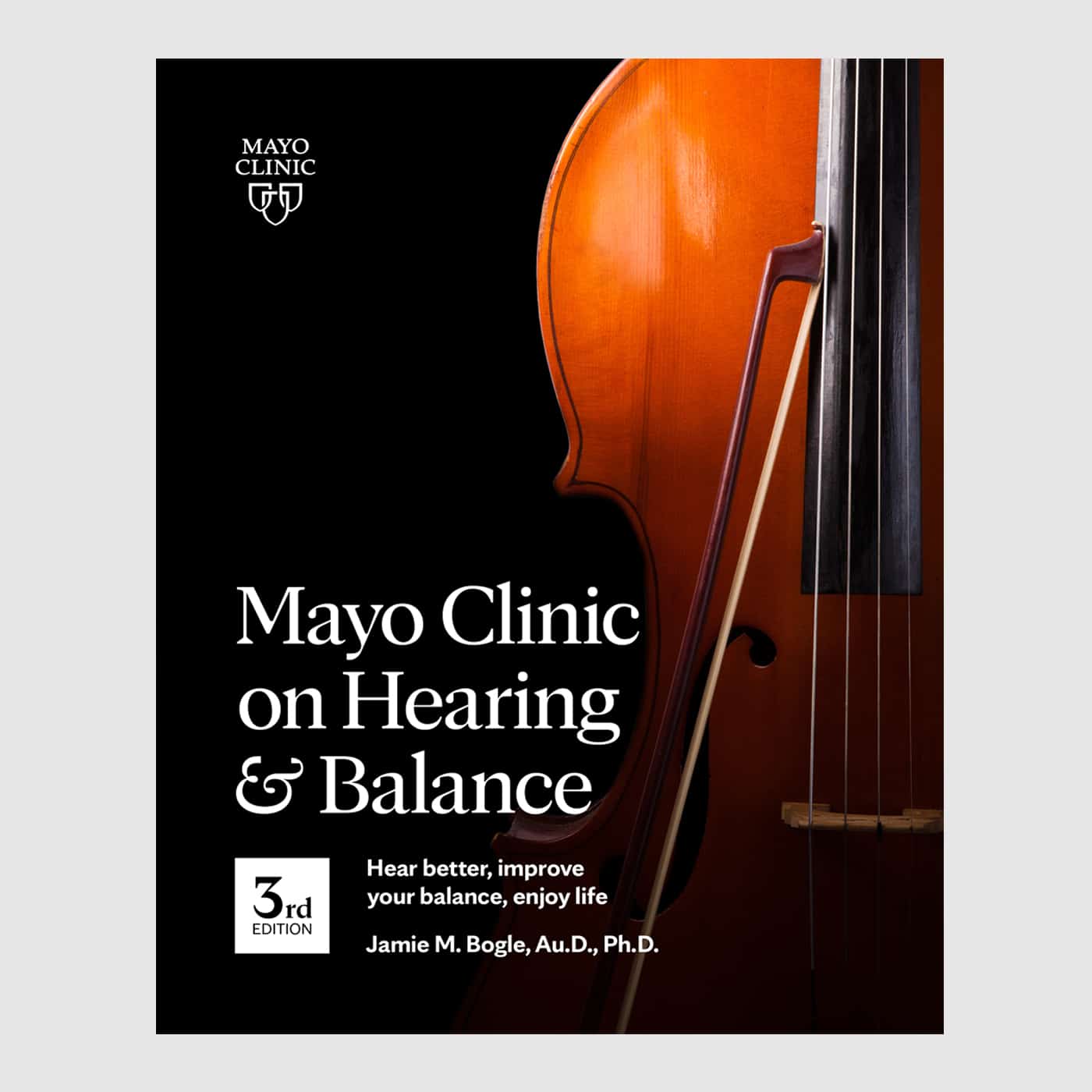
Relevant reading
Mayo Clinic on Hearing and Balance, 3rd Edition
Mayo Clinic on Better Hearing and Balance helps readers understand the possible causes of hearing and balance issues and offers solutions aimed at improving not just hearing and balance, but quality of life overall.

